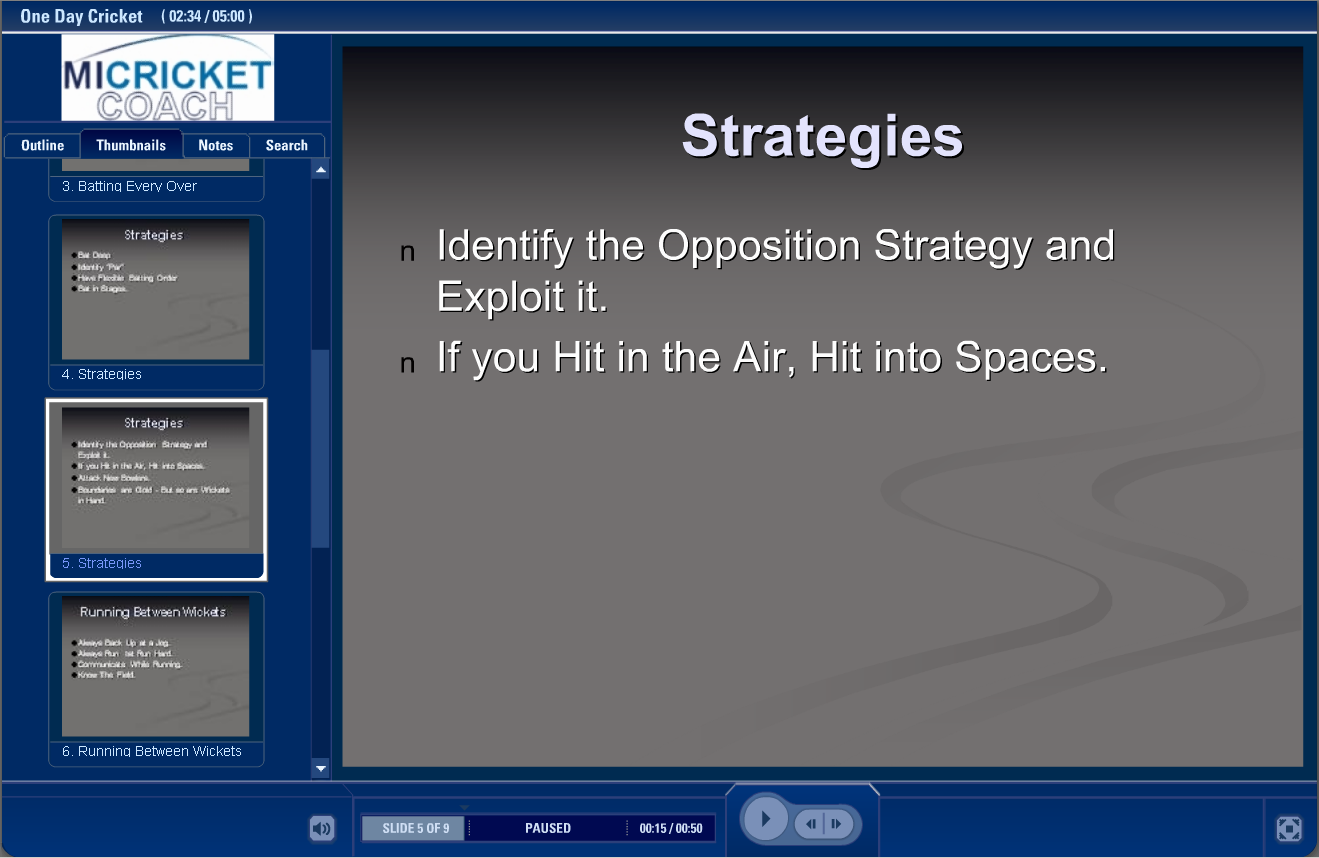Some rules for junior cricketers
What are the main things a junior player should be trying to do every time he or she plays a game?
Here is a list of the rules I have come up with from my experience as a coach. Every team will have its own set of rules. This list is just a start. Remember rules require discipline. Playing with discipline will contribute to success at any level.
Chasing a big score: Learning from the Ashes
In the wake of the 2009 Ashes series, I thought I would have a look at the way the Australians played during the big run chase in their second innings of the final Test when the series was on the line.
Improve your Twenty20 tactics in 5 minutes
How to improve your bowling control without becoming robotic
This free video guides you through a simple drill to help you improve your bowling control without becoming robotic. Filmed at Activate Cricket Centre in Sydney, you can do the drill on your own or with a coach giving feedback as you perform it.
A batting drill to improve your footwork
Are you looking to improve your footwork and get your shoulder in the right position?
This drill, filmed at Activate Cricket Centre in Sydney, we see how you can work wonders with a friend, a batting tee, some cones and a couple of balls.
How to analyse your bowling action with some chalk
Every fast bowler knows that a 'mixed' action is a recipie for lower back injuries. If you don't have a video camera, how can you tell if your action is mixed?
In this video, filmed at Activate Cricket Centre in Sydney, we look at how a simple piece of chalk can be just as effective if you know how to use it. Learn how you can find out if your shoulders and hips are properly aligned in your action and reduce your chance of injury.
Great catching : It's in us all!
These catches should re-affirm in us the belief that you can make great catches too. It is within the capabilities of every fielder to change the course of a game with one piece of inspirational fielding.
'The Map' Part 6: How to learn new skills from every match you play
Cricket is a great game in that you can learn from every game you play. The trick is organizing so that lessons learned can be identified and stored for future use.
Evaluating your game should be an ongoing feature of your map. By regularly assessing how your game is developing, you give yourself a better chance of picking up small flaws in your game before they develop into major problems. When developing evaluation routines try these techniques:
'The Map' Part 5: How to recover quickly from one game to the next
Your post-match routine is another area where developing simple routines can be beneficial.
At the end of any contest there is the desire to relax, celebrate perhaps, reflect on performances and identify ‘what went wrong’.
In order to make this period as productive as possible you can employ:
Physical Recovery Routines
'The Map' part 4: How to stay focused on playing the game
There is a large mental side to cricket and it is often our thinking that gets us out or stops us bowling well.
There are a lot of distractions going on through the course of a game: In the middle, waiting to bat, waiting to field, taking lunch, tea or a drinks break. What is required is a set of routines or processes you can employ, almost without thinking, that will allow you more time and ‘brain space’ to focus on playing the game as well as possible.



